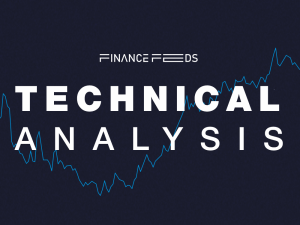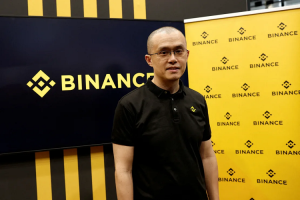Indian game-changer could push market toward exchange-based MetaTrader 5
The Indian securities regulator has brought draconian new rules in to stem what it considers to be “excessive traders”. We examine the new rules and look at why MetaTrader 5-based INR futures may be a solution

India’s vast yet complex and relatively disorganized retail financial markets structure has been an enigma to many trading firms, often creating a will to do more business in the rapidly developing and highly industrial nation, which is often thwarted by trepidation.
Many OTC firms have been dissuaded from entering on a large scale due to the obstacle-strewn business landscape, that is until one of the world’s emerging exchanges began concentrating on exchange traded currency futures centered around the Indian Rupee, that being the Dubai Gold and Commodities Exchange (DGCX).
For the last seven years, DGCX has absolutely majored on the Indian Rupee futures contract, and many wealthy investors and traders have flocked into Dubai’s Indian currency-denominated flagship product, which has led to MetaTrader 5 now being a major trading platform at DGCX for that purpose.
Today represents a further step in the muddying of India’s financial waters, as the Securities and Exchange Board of India (SEBI) has begun implementing a game-changing new set of regulatory requirements which the regulator claims is aimed at “taking excessive traders out of the game”.
Nearly two decades after equity derivatives came to India, SEBI has declared it was altering its rules, which many in the market believe may be revolutionary and make enormous differences to the market environment.
SEBI has said that the bottom 50 stocks in the derivatives segment will move to delivery settlement every quarter in 2019. This means that within nine months the entire equity market will move to delivery based trading.
Under the cash system, derivative contracts are settled by paying the difference in cash and there is no obligation on the buyer to accept delivery of goods or underlying security he traded. This pushed up ‘speculative’ volumes way higher than actual available stocks.
The trigger for SEBI’s change of heart was a study done by the government in 2017 that showed cash market volumes at its nadir in equities while derivatives propelled India as the most speculative market globally after Korea. The ratio of derivative to cash segment turnover stood at 15.2:1 — more than 15 trades in derivatives for every cash market trade. Also, tax collection from derivatives is low compared to the cash segment.
Bearing this in mind, and India’s domestic-market appetite for stocks and equities, restricted delivery and shorter windows may well create a flock toward currency futures, especially Indian rupee denominated currency futures that are operated by a venue that is outside India’s jurisdiction – ie DGCX.
Indeed, the Indian rupee futures contract traded on DGCX accounts for over 31% of all global exchange traded Indian Rupee market share and the Indian rupee is volatile and subject to many extremely unsettling initiatives by the Indian government making it a very popular instrument.
In other regions of the world, the discussions relating to potential moves onto exchanges by FX firms has largely died out despite the obvious lobby by exchanges to win back retail clients from the OTC firms, even in North America, which leads the world in exchange-traded products from the derivatives and exchange technology powerhouses of Chicago.
It is easy to see why. In Chicago, clearing and membership fees of a vast, long established electronic derivatives marketplace would be prohibitive, and the OTC market is buoyant and stable. In India and certain parts of the Arabian peninsula, however, things are very different indeed.
DGCX membership and clearing fees are a fraction of those of the giants of the MidWest, and the Indian rupee futures contract is a roaring success as a futures contract.
Now, with low rupee values and a very uncertain fiscal policy in a disorganized country which has a massively productive economic structure, this could be the actual dawn of the Indian rupee’s rush to popularity as an exchange traded asset.
Placing a futures bid on a currency such as the rupee on a long position, whilst it is in disarray, on a venue which is highly energized in rupee trading, based in an economically (by Middle East standards!) stable location could appear to be quite interesting, especially when taking the instantaneous nature away from the transaction, and matching it against indices and commodities.
“With delivery-based trading, markets could become more safe as casino-like trading may see curbs,” said DR Mehta, who was SEBI chairman between 1995 and 2002. It was under Mehta that derivatives trading in India was first introduced for equities, and a committee appointed by him then declared that delivery settlement was the way forward.
SEBI recently pushed commodity bourse MCX to change course and shift to delivery settlement, which is expected to cut India’s dependence on foreign exchanges for price discovery in base metals. MCX will start with delivery trading in zinc and nickel. The exchange has been paying hefty fee to the London Metal Exchange and the Chicago Mercantile Exchange for price discovery even as domestic companies that require hedging mostly stay away due to non-availability of local price and speculators dominate, experts say.
As far back as June 2016, DGCX reached a milestone in that 10 brokers had already begun offering trading via DGCX on the MetaTrader 5 platform.
DGCX, under the leadership of former CEO Gary Anderson who tragically passed away after a battle with cancer in November 2014, the DGCX raised its profile tremendously and became a landmark among currency trading in the Middle East, largely due to the Indian Rupee contract offered on the exchange.
Although DGCX is a commodities exchange and Dubai has a very strong history reputation for gold trading, the venue’s most popular contract remains the Indian currency contract, and connecting retail platforms to the venue for the purpose of getting a piece of the Indian Rupee futures action was on the mind of platform developers, integration specialists and traders alike, as per a report by FinanceFeeds at the time.
Clearly India’s market is vast and not for the feint hearted, but this is what has made the Indian Rupee contract so popular, hence now with SEBI attacking traditional domestic market commodities and equities, it could be a good time to head into India with an exchange-connected MetaTrader 5 in order to fill that gap.









